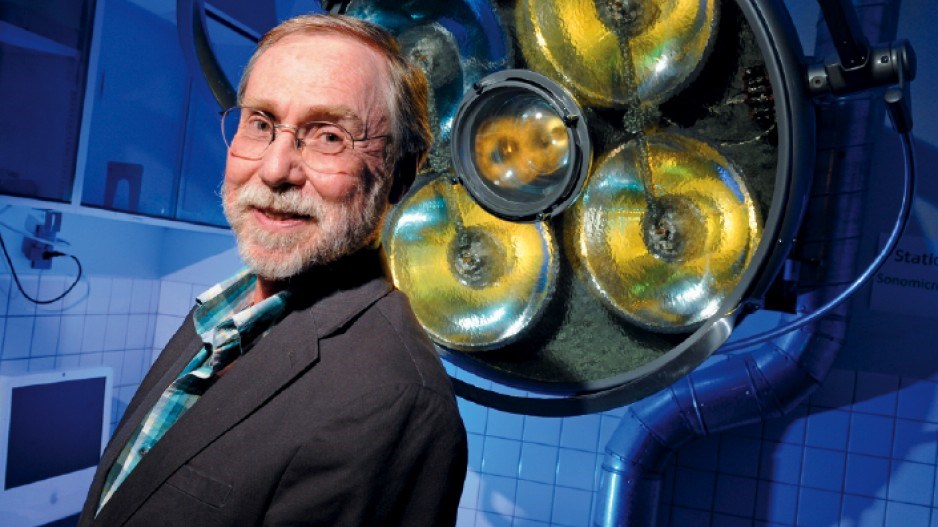In 2006, when Andy Hoffer’s elderly mother became critically ill, she was placed on a mechanical ventilator.
When she was well enough to breathe on her own, there were complications arising from the fact the human diaphragm quickly atrophies from disuse when a patient is placed on a ventilator.
“All muscles will atrophy if not used, but the diaphragm atrophies far faster than any other skeletal muscle,” said Hoffer, a scientist with Simon Fraser University’s Department of Biomedical Physiology and Kinesiology.
Hoffer turned his mind to addressing the problem and came up with the Lungpacer, which he said could one day replace mechanical ventilators in hospitals.
The device, which is still in the pre-commercial development stage, uses electrodes, inserted via catheter, to electrically stimulate the phrenic nerves, which control the diaphragm.
Used in conjunction with a mechanical ventilator, it could prevent the diaphragm from atrophying, which poses serious “weaning” problems in critically ill patients. Hoffer said 30% of patients fail to wean properly from mechanical ventilators.
It could also help draw air into the lungs. That in turn could reduce the pressure ventilators use to force air into the lungs – pressure that can damage the lungs and cause ventilator-associated pneumonia. It might also aid the heart and circulatory system, Hoffer said, so even if it’s used only as an adjunct to a ventilator, it could mitigate at least three serious medical complications.
So far, the device has been tested only on pigs. Hoffer hopes the first human trials will start within a year.
Although still in the startup stage, Hoffer’s company – Lungpacer Medical Inc. – has been generating considerable buzz. Hoffer won the LifeSciences BC Innovation of the Year award in 2010, and Lungpacer won the BC Technology Industry Association’s Most Promising Pre-commercial Technology award for 2012.
The company has also received close to $1 million in federal grants and is getting support from SFU, which paid for the company’s patent applications and prototype development. That kind of support from local universities has helped foster a scientific entrepreneurialism that has spun out QLT Inc. (TSX:QLT) and other life sciences companies, said LifeSciences BC president Don Enns.
“Lungpacer is another example where there is an entrepreneurial ability here [in the scientific community] within this region that is much stronger than in many other parts of Canada.”
Hoffer is now seeking a seed round of investment to raise the $2 million needed to start human trials. He’s unsure which path the company will take to commercialization, although his experience with previous SFU spinoffs suggests he might resist taking an early exit. Hoffer is a co-founder of BionicPower, maker of the Energy Harvester – a knee-brace type of device that turns the mechanical energy of walking into electricity. He also co-invented the Neurostep, which uses electrical implants to help stroke victims and people with various gait disorders walk better.
Hoffer sold Neurostream Technologies – which developed the Neurostep – to Quebec’s Victhom Human Bionics. Victhom then sold it to Germany’s Otto Bock Group. “The Neurostep we sold … prematurely, in 2004 after we did proof of concepting,” Hoffer said. “I think with Lungpacer we’re doing things a little differently.” •




